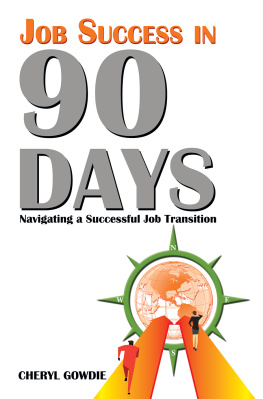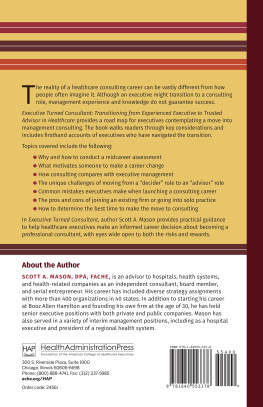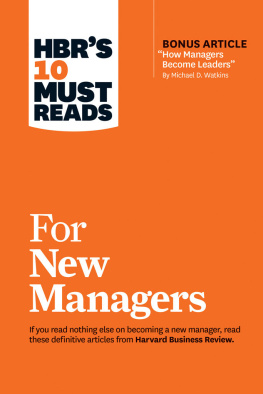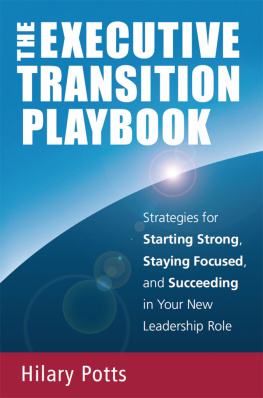Guide to
Michael D. Watkinss
The First 90 Days
Proven Strategies for Getting Up to Speed Faster and Smarter
by
Instaread
Please Note
This is a companion to the original book.
Copyright 2016 by Instaread. All rights reserved worldwide. No part of this publication may be reproduced or transmitted in any form without the prior written consent of the publisher.
Limit of Liability/Disclaimer of Warranty: The publisher and author make no representations or warranties with respect to the accuracy or completeness of these contents and disclaim all warranties such as warranties of fitness for a particular purpose. The author or publisher is not liable for any damages whatsoever. The fact that an individual or organization is referred to in this document as a citation or source of information does not imply that the author or publisher endorses the information that the individual or organization provided. This concise companion is unofficial and is not authorized, approved, licensed, or endorsed by the original books author or publisher.
Table of Contents
Overview
The First 90 Days is a handbook for the executive in transition. It provides lessons and examples for the optimal way to successfully enter a new company, position, or role. Above all, making a strong transition in the first 90 days can be the difference between long-term success in that role and a spiral into failure that can haunt an executives reputation wherever he or she may go.
The first 90 days are best when approached as a period of learning and analysis instead of action. For a new executive, early initiatives loom disproportionately large to new bosses, colleagues, and employees. As a result, leaders in transition should use this time to secure early wins, learn about what supports the status quo, and develop a clear idea, together with higher management and employees, of what success will look like in each persons individual role. Once new leaders reach a break-even pointthe moment when the value they bring to the company is equal to the time and effort the company has put into their onboardingthey will be ready to make substantial contributions that help to guarantee success in the long term.
There are a number of areas new leaders should focus on during their first 90 days. These include the organizations overarching structure and where it is and is not aligned, cultivating a relationship with superiors, and public perception within the company at large. By controlling these aspects of a transition, leaders will be better equipped to manage the external forces and surprises that are likely to emerge during their tenure with the company.
Important People
Michael D. Watkins is the chairman and co-founder of Genesis Advisers, an onboarding and transition-acceleration consulting and coaching firm. He started this company following the success of The First 90 Days. Prior to writing this bestseller in 2003, he was a professor at Harvard Business School and the IMD Business School in Switzerland.
Key Insights
- The first 90 days are critical to determining future success in a new role. This is true for any employee, from a CEO to a first-time manager.
- Mastering the 90-day transition is more important now than ever, as workers rarely remain in a single company for the life of their career.
- New leaders should prepare to spend a significant portion of the first 90 days on the job learning instead of changing their new workplace.
- Every transition must be tailored to a companys specific stage of development.
- New leaders should define what success means for them in their new position. If they have a boss, they should develop a concept of success together and agree upon it as early in the first 90 days as possible.
- Not all early wins are created equal.
- In the first 90 days, new leaders should focus on the organizational elements that need adjusting and aligning. Then, they should only consider changes that are in accordance with the companys position in the STARS portfolio.
- New leaders must build their team thoughtfully. It is not in a leaders best interest to make knee-jerk personnel decisions too early.
Analysis
Key Insight 1
The first 90 days are critical to determining future success in a new role. This is true for any employee, from a CEO to a first-time manager.
Analysis
Fairly or unfairly, the early actions of new leaders cause a series of events with outcomes that could have negative repercussions throughout their entire term with the company. If the leaders influence these chain reactions to instead catalyze positive momentum, this energy will help carry them through troubles or slumps in the long term. Securing early wins is one way to exert a positive influence on ones trajectory.
People are quick to form first impressions. Harvard Business School professor and social psychologist Amy Cuddy has been studying the impact of early interactions on building professional relationships for the last 15 years. She found that workers generally approach a new relationship by asking themselves two questions: Can I trust this person? and Can I respect this person? She finds that the latter question tends to rank higher in importance for employees or coworkers who view a leaders competence level as particularly vital. [1]
Trouble is, for a new leader, these impressions often occur within secondsand studies have shown that people will make many of these assumptions based on a photograph and without even meeting the person in question. [2] While some of these impressions will be out of a leaders control, his or her actions on the job can dominate or change the narrative.
For example, Anna, a new leader in her company, may be initially perceived as competent and intelligent based on a first impression. However, if she then begins making significant organizational and personnel changes without doing research into the reasons behind the status quo, a new first impression may come to the fore when employees decide her judgment is flawed. Any future initiatives she attempts to enact may then be rejected out of hand, as trust has been irrevocably broken.
Alternately, her initial impressionor even rumors of her work at a prior companymay paint her as a self-important egomaniac. Nevertheless, her actions may be able to overcome this early negative bias. Instead of taking swift actions in the workplace, perhaps she holds a series of one-on-one meetings with staffers in which she listens intently and takes no early actions. In time, workers may begin to see her as a thoughtful, measured leader who is willing to listen and learn. Even years down the road, perhaps, these workers may be more willing to accept changes she implements because they know that she has a history of doing her homework. Then, she may be able to change the narrative in her favor based on early actions.
All of these efforts are part of a new leaders larger goal of reaching his or her break-even point. This is the milestone at which a new leader has contributed as much value to the company as he or she has received through training and onboarding.
Key Insight 2
Mastering the 90-day transition is more important now than ever, as workers rarely remain in a single company for the life of their career.
Analysis
A persons reputation can be a particularly powerful force for good or bad. Most hiring managers admit that they often go beyond an applicants list of references to get the full picture of the applicants work at a past job. [3] If leaders make major mistakes in their first 90 days that cost them their credibility for the life of that job, those errors could prevent them from getting hired at a next job.
Next page


















